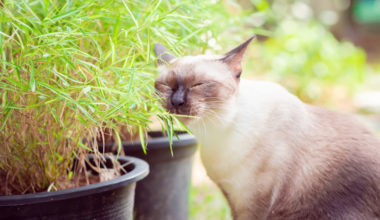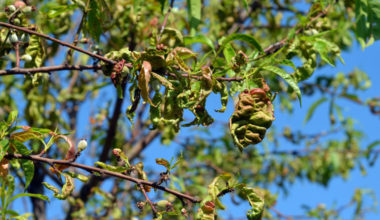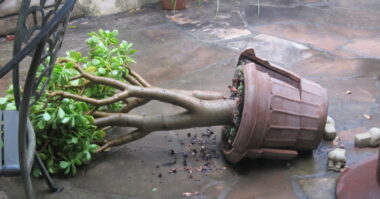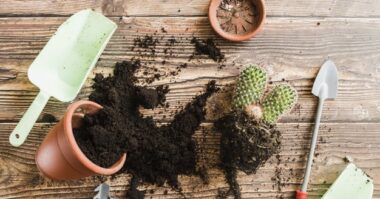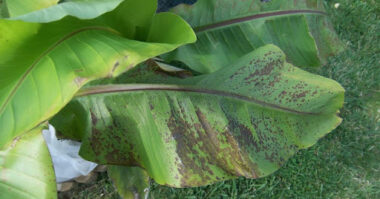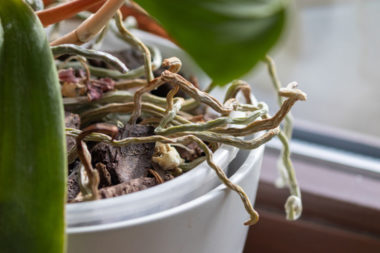Do your beloved plants all perish one after the other during the flowering period, despite the care you give them? We’ll tell you what to do about it.
The good news is that plants do die for a reason. Especially when they are indoor plants and their environment, not subject to weather forces, is relatively controllable. It is often enough to identify the factors of this poor health for the plant to regain its full splendor.
Contents
How do you know if it is still possible to save the plant?
It is useless to make efforts if all hope is lost! On the other hand, it is possible to save a plant in a bad state if you can see signs that it is still alive despite appearances.
- First, look for buds and the presence of green leaves, which are good signs. In fact, you can grab a bud between your fingers and try to crush it a little. If it crumbles, that’s a bad sign, but keep looking for live buds along the plant.
- Then with your fingernail, very lightly scrape the bark looking for green. If you find any, the plant is still alive and if the tissue is brown, it is dead.
- Also, try bending stems around your finger starting at the top of the plant and working your way down. A live stem will be flexible and bendable, while a dead stem will break.
Here, you can cut the dead parts from the top until you see green shoots. To do this, wait until the end of winter and late frosts. You can cut up to a third of the stem at a time in search of green tissue.
Why does my plant die during flowering?
You water them too much
This is unfortunately something common among people who love their houseplants too much. While listening to the needs of their yucca or Japanese cycas, they tend to water it as soon as they think of it – that is, every other day. The result is that the plant is overwhelmed with water and can no longer absorb it, its roots rot and its trunk becomes soft. A plant that is overwatered is also more susceptible to parasite attacks.
Recognizing a plant that is overwatered is simple: if its leaves soften, turn yellow, and eventually necrose and die, it is time to put it on a dry diet. Water it only when the soil on top is dry. Otherwise, it still has reserves.
They have poor drainage
Poor drainage is the cause of death for many plants. When they are poorly drained, plants tend to retain water in the bottom of the pot, even if the upper layers of the soil are dry. The roots are then in contact with this swampy water and eventually rot.
To achieve good drainage for your plants, always choose a pot with a hole in the bottom. Then install a drainage bed at the bottom of the pot. This should be about 20% of the volume of the pot and can be made of gravel, pot shards or clay balls.
Making a drainage bed will facilitate the flow of water and avoid stagnation at the roots. Don’t forget to leave any stagnant water in the cups or planters.
You don’t repot them
It is common – especially when you buy them – that plants are housed in pots that are too small, which do not allow them to grow.
Tightly packed in a small pot, its roots end up suffocating, which inevitably leads to the death of the plant. To flourish and continue to grow, plants must be repotted every year, usually in March or early April.
To repot your plant, choose a pot with a slightly larger diameter than its current pot, as well as a substrate adapted to the needs of your plant: potting soil, peat, heather soil, compost or sand.
Their soil is too old
This problem is closely related to the lack of repotting. Most potting soils are made of peat, which decomposes over time and becomes more acidic. This makes it more difficult for water and oxygen to circulate properly. In the end, the plant risks dying of malnutrition. The ideal is to repot it regularly (at least every two to three years) and to change the substrate when it is the case.
You don’t water them enough
Don’t fall into the trap: if your plant’s foliage looks bloody and flat, or if its leaves are drying out, it is clearly lacking water.
You’ll notice that we’re not talking about light concerns and lack of fertilizer here. The truth is that if you water your plants regularly, repot them regularly and take care to give them good drainage with the right substrate, they will survive without any problem.
Houseplants can adapt quite well to all interiors, whether they are well lit or not, whether the air is too dry or humid enough. As for problems with soil nutrition, you won’t have any if you change it regularly.
The lighting is not suitable for it
Whether it’s because you’ve moved it to a different location, because you’ve got new curtains that are more blackout and insulating for the winter, or because the lighting has changed naturally (for example, because of a season with less sunlight), this could be why the plant is doing poorly.
Indeed, some plants need to receive a lot of light, while others can’t stand it. If the foliage has white or brown spots, it’s usually because it didn’t like being bathed in too much sun. So, move them around according to their needs and give them time to recover.
How do you get a dying plant back into full bloom?
Cut off the top of the stem
Once you’ve determined that part of the stem is dead, it needs to be cut off. With the pruning shears, remove all the dry, brown part of the plant.
If you are not sure where the stem is still alive, cut every three centimeters from the top. As soon as you see the green heart of the stem, you’re done!
If you have to, cut the stem all the way down to the base, leaving only the roots, after which you will simply have to be patient to see if the roots will produce a new plant or not.
Be careful with outdoor plants, you must wait until the winter is over before proceeding with this step.
If you expose the green heart of the stem just before a frost, it could be fatal to your plant!
Moving the plant
As you probably know, exposure to sunlight is an essential part of a plant’s survival. However, all plants are unique and do not need to be placed in the same location.
Some will be healthier with only indirect light, others need to be in full sun.
If your plant looks dead, it may be because it is not getting the right exposure. Whether it’s a houseplant or a garden plant, now is the time to move it if necessary.
Find out what your plant’s specific needs are, and watch out for shadows from trees and even your house!
Change your watering habits
In addition to sunlight, the plant also has a vital need for water. But again, not every plant should receive the same type of watering.
Some require heavy daily watering, while others require simple moistening of the leaves and soil.
Find out how much water your plant needs and observe its appearance: if the stem and leaves are completely dry, the plant probably didn’t get enough water.
On the other hand, if the base of the plant and the roots have started to rot, it is because it was receiving too much water!
For houseplants, also consider the general humidity of the room in which you place it. Plants also absorb moisture through their leaves, so the quality of the air helps it thrive!
Look for a nourishing fertilizer
To give your plant a boost, you’ll want to make a good, nourishing dish for it.
Go to a garden store with the name or picture of your plant and ask for a suitable fertilizer. The salespeople will be able to tell you which fertilizer is most effective for your plant.
Roses do not need the same components and minerals as a mimosa!
Also, ask the store about the method of administering the fertilizer. While most of the time you simply add the fertilizer to the soil around the stem, some plants do not react well to direct contact with the fertilizer. In this case, the fertilizer should be diluted in the water!
Saving cuttings
If you don’t think you can save the plant, but there are still some living parts left, there is still time to take cuttings!
Cut off the living parts of the plant and put them in a glass of water. You can also place them in absorbent cotton or paper soaked in water if your cuttings are minimal and fragile.
Wait a little while to see if the plant pieces start growing again in this new environment. As soon as possible, transfer your cuttings to the soil, to a pot or directly to the garden!

